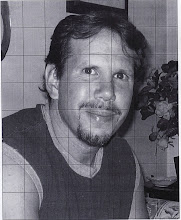Herein lies s bit of a travel log of projects and various musings that went on over the last semester (some of it actually recedes back over the fall but is directly related to spring projects as building block or seeds) . Christopher Ernst, the instructor of my Cinematography class here at The New School, fits into that rare genus of film practitioners gifted with a strong and cutting-edge theoretical vocabulary as well as being inordinately tech-savvy. He was exceedingly supportive of our overall needs and goals and was flexible to the extent that he was willing to accommodate our works-in-progress within the existing syllabus.
One of my big preoccupations over the semester was my mixed feelings concerning the general hodge podge assortment of material which comprises, Juggernaut, my documentary work-in-progress. Since starting the project over three years ago-the shift in standards from mini-dv to HD as a general format of choice for a lion's share of production work has left me in a quandary as to how to maximize the visual potential of mini-dv and to tweak and light it to get more of a "filmic" look. Chris was instructive while being at the same time candidly realistic- basically his take was this- "If you want "film"-shoot on film." Having said that- he went out of his way to fill us in on the latest advances in prosumer cameras and lenses hitting the market with some phenomenal cinematic elements. For the right price, the sky really is the limit in regard to things like depth-of-field, resolution and flexibility of focal lengths with the new HD rigs. But here I was, stuck with a majority of my footage in 24p SD, ripped .flv files and multi-generation vhs tapes. What to do?
Well, one of the things I became aware of-(or better was generally aware of but usually ignored) were the various menu settings in cameras like the Panasonic DVX-100B and Canon XL2s. The footage below was shot on the XL2s with the following settings
menu settings;
gamma-cine
knee-low
black-stretch (for a lower con look)
color matrix-cine
V detail-norm
NR-off
Color Gain-+1 (1 click above center)
color phase- G+1 (1 click toward G from centre)
Red Gain-0
Green Gain-+3
Blue Gain-0
Sharpness-3 (-3 clicks from centre)
coring +1
set up level 0
master level 0
I believe these are correct-I am reconstructing.
The first thing I learned was that using the "gain" is not a good idea at all. What I also realized was that you can get some really good images out of this camera. For instance look at the texture of the stone floor around 3:40 into the video. The overall"effect" seems to work better with available daylight as opposed to florescent light. I would assume it would also look good in tungsten with the right lighting set-up.
Saturday, May 15, 2010
Subscribe to:
Post Comments (Atom)

No comments:
Post a Comment